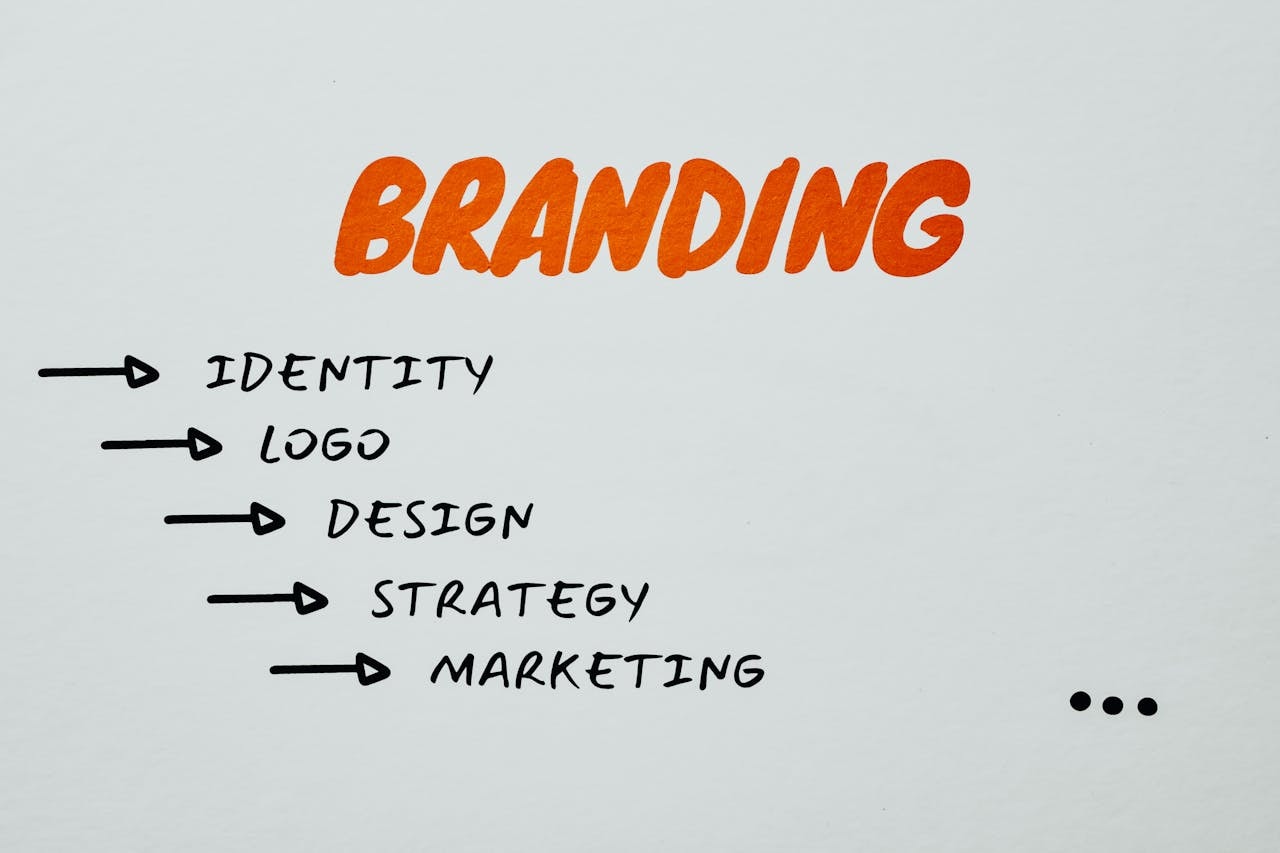
Why Your Business Needs a Social Media Strategy

Social media is no longer just a place for sharing memes and cute pet videos (though we love those). It has evolved into an essential marketing tool that enables businesses to increase brand awareness, generate leads, and establish meaningful customer relationships. Whether you’re a small business owner, a startup founder, or a large enterprise, having a successful social media strategy is crucial to staying competitive in today’s digital landscape.
The Digital Shift: Why Social Media is Now a Business Necessity

Gone are the days when traditional marketing channels like TV ads, billboards, and radio spots were the primary ways to reach your audience. With over 4.9 billion social media users globally and millions of active users in Australia alone, social media marketing platforms have become an indispensable part of a company’s digital marketing strategy.
A well-planned social marketing strategy allows businesses to:
- Reach a wider audience: Unlike traditional advertising, social media allows you to connect with potential customers beyond geographical barriers.
- Enhance customer engagement: Engaging with your audience through interactive social media posts builds trust and loyalty.
- Boost brand awareness: Consistently showing up on different social media platforms helps establish your brand identity.
- Drive website traffic and conversions: A solid social media marketing strategy can funnel traffic to your website, leading to more inquiries and sales.
- Stay ahead of competitors: Businesses that leverage social media advertising and strategic content creation outperform those that rely on outdated methods.
The Cost-Effectiveness of Social Media Marketing
One of the biggest advantages of social media marketing is that it is highly cost-effective. Traditional advertising requires significant investment, but social media marketing efforts can be scaled to fit any budget. Businesses can start with organic engagement and later invest in social ads to boost brand awareness further. With content management tools and social media management software, businesses can streamline their social media campaigns without hiring an extensive social media team.
Data-Driven Insights for Better Decision-Making
Another major advantage of having a social media strategy is access to valuable insights. By leveraging social media listening tools, businesses can:
- Identify customer preferences and trends.
- Analyse key performance indicators (KPIs) to measure success.
- Conduct competitive analysis to refine their own strategy.
- Optimise content strategy for different social media channels based on audience response.
Personalisation: Meeting Your Audience Where They Are
Modern consumers expect personalised experiences, and social media networks offer the perfect platform for tailored marketing. A data-backed social strategy helps businesses understand their audience demographics and deliver relevant content that resonates with their interests, values, and online behaviours. By choosing the right social media platforms, businesses can create targeted social media marketing campaigns that speak directly to their target audience.
The Role of Social Media in Brand Identity and Trust Building
Your social media presence is an extension of your brand identity. Customers now use social media pages to assess a brand’s credibility, values, and responsiveness. A well-managed social media marketing channel fosters trust through:
- Consistent content creation that aligns with personal values.
- Active social customer service that addresses inquiries and complaints.
- Showcasing company culture through behind-the-scenes content.
- Encouraging user-generated content to build a community around your brand.
Social Media Strategy: The Key to Long-Term Growth
A well-executed social media strategy template ensures that your business does not just have a presence but thrives in the social space. With the right social media content calendar, businesses can plan their posts strategically, maintain a cohesive message across multiple platforms, and drive audience growth rate consistently.
In the next sections, we’ll take a deep dive into how to build an effective social media marketing plan that aligns with your broader business objectives, increases engagement, and maximises ROI.
What is a Social Media Strategy?
A social media strategy is a comprehensive plan that details how a business will leverage social media platforms to meet its business objectives. It provides a structured approach to content creation, social media marketing campaigns, audience engagement, and performance measurement.
The Core Elements of a Social Media Strategy
A robust social strategy includes several key components:
- Business Goals & Objectives – Aligning social media efforts with broader business objectives ensures meaningful outcomes.
- Target Audience & Audience Demographics – Understanding your audience’s preferences, behaviors, and demographics allows for tailored messaging.
- Social Media Channels – Choosing the right social media platforms based on your industry and audience.
- Content Strategy – Developing a mix of educational content, user-generated content, promotional material, and social media posts that add value.
- Posting Schedule & Social Media Content Calendar – Maintaining consistency across multiple platforms to engage users regularly.
- Community Engagement & Social Customer Service – Building relationships with followers through two-way communication.
- Social Media Advertising – Leveraging social ads for audience expansion and lead generation.
- Measurement & Social Media Audit – Regularly reviewing key performance indicators (KPIs) to measure success and optimise future campaigns.
Why Every Business Needs a Social Media Strategy
Without a well-structured social media marketing plan, businesses risk wasting time, money, and resources on ineffective tactics. A successful social media strategy ensures:
- Consistency in Branding – Maintaining a unified voice across social media networks.
- Efficient Content Planning – Using content creation tools and a social media content calendar to streamline efforts.
- Better Audience Targeting – Tailoring content to the right social media platforms based on audience behaviors.
- Improved ROI – Strategic allocation of resources to boost brand awareness and achieve business goals.
The Impact of a Social Media Strategy on Business Growth
A well-executed social media marketing strategy can significantly impact a business’s growth by:
- Increasing brand awareness and audience reach.
- Generating leads through effective social selling.
- Enhancing customer engagement with interactive content.
- Improving conversion rates by nurturing relationships with potential customers.
- Strengthening brand loyalty through active community management.
A social media presence without a strategy is like sailing without a compass. By investing in a clear social media strategy template, businesses can navigate the social space with confidence and achieve long-term success.
In the following sections, we will explore the step-by-step process of crafting an effective social media marketing strategy that drives real results.
Why is a Social Media Strategy Important?
Having a social media strategy is more than just posting content randomly—it’s about ensuring that every action you take is intentional and contributes to your overall business goals. Without a structured plan, your efforts on social media platforms may not yield the desired results, leading to wasted resources and missed opportunities.
1. Strengthens Your Brand Identity
Your social media presence acts as an extension of your brand identity. A strong social media strategy ensures that your messaging, tone, and visuals remain consistent across all social media networks. This consistency reinforces your brand’s values and mission, making it easier for audiences to connect with and recognise your business.
2. Provides a Roadmap for Achieving Business Goals
A well-structured social media marketing strategy aligns with your broader business objectives. Whether your goal is to boost brand awareness, generate leads, or improve customer retention, your social media marketing plan should define the steps needed to get there.
3. Optimises Audience Targeting
A successful social media strategy helps businesses define their target audience by identifying key audience demographics, interests, and online behaviours. Understanding your audience ensures that you create relevant content that resonates with them, ultimately increasing engagement and conversions.
4. Helps You Stay Ahead of the Competition
With so many brands competing for attention on multiple platforms, standing out requires strategic planning. A competitive analysis of industry leaders and competitors can help refine your own strategy by identifying what works and what doesn’t. By leveraging social media listening and monitoring tools, businesses can gain valuable insights into trends, customer sentiments, and opportunities for engagement.
5. Enhances Customer Engagement and Loyalty
Social media is a two-way communication channel, and businesses that actively engage with their audiences foster trust and brand loyalty. Implementing an effective social media customer service strategy by responding to comments, messages, and inquiries promptly ensures that customers feel valued and heard.
6. Provides Measurable Performance Metrics
Without tracking performance, you won’t know if your social media marketing campaigns are working. A data-driven social strategy allows businesses to monitor key performance indicators (KPIs) such as:
- Engagement rate (likes, shares, comments)
- Follower growth and audience growth rate
- Website traffic from social media networks
- Conversion rates
- Return on investment (ROI) from social media advertising
By conducting a social media audit, businesses can measure success and refine their strategies accordingly.
7. Facilitates Content Planning and Consistency
A social media content calendar helps businesses plan and schedule content in advance, ensuring that they maintain an active and engaging social media presence. Using content creation tools and social media management software, businesses can streamline their workflows and optimise posting schedules for different social media platforms.
8. Supports Business Scalability and Growth
As businesses grow, so do their marketing needs. A well-crafted social media marketing strategy can evolve with your business, allowing you to scale your marketing efforts efficiently. Whether expanding into new markets or launching new products, your social media pages serve as powerful tools for reaching wider audiences.
9. Drives More Sales and Conversions
Beyond increasing engagement, a strategic social media marketing plan is designed to generate leads and drive conversions. By leveraging social selling, influencer collaborations, and paid social ads, businesses can guide potential customers through the buying journey more effectively.
10. Positions Your Business as an Industry Leader
A strong social media presence combined with high-quality, educational content can establish your business as an authority in your industry. Sharing thought leadership articles, case studies, and expert insights builds credibility and attracts more followers who trust your expertise.
Setting Clear Goals for Your Social Media Strategy
A successful social media strategy starts with clearly defined goals that align with your broader business objectives. Without goals, you won’t be able to measure success or adjust your strategy effectively.
The SMART Framework for Goal-Setting
Your social media marketing goals should follow the SMART framework:
- Specific: Define exactly what you want to achieve. Instead of “increase engagement,” aim for “increase Instagram engagement by 20% in three months.”
- Measurable: Ensure progress can be tracked with key metrics such as likes, shares, comments, and conversion rates.
- Achievable: Set realistic expectations based on your current resources and market conditions.
- Relevant: Align goals with your business goals and industry trends.
- Time-bound: Establish a timeline to reach your objectives, whether it’s three months, six months, or a year.
Different Types of Social Media Goals
Depending on your business needs, you may have different goals for your social media marketing efforts. Here are some common objectives businesses set:
1. Increasing Brand Awareness
- Expanding reach by posting high-quality, relevant content regularly.
- Leveraging social media advertising to target new audiences.
- Partnering with influencers or industry leaders to amplify visibility.
2. Driving More Traffic to Your Website
- Sharing blog posts and landing pages on different social media platforms.
- Using call-to-action (CTA) buttons on social media pages to encourage website visits.
- Running paid social media campaigns aimed at website conversions.
3. Generating Leads and Conversions
- Offering exclusive content such as e-books, webinars, or free trials.
- Running targeted social media ads that capture lead information.
- Using social selling techniques to nurture relationships with potential customers.
4. Enhancing Customer Engagement
- Creating interactive social media posts such as polls, Q&A sessions, and contests.
- Engaging in social customer service by responding to queries and complaints in real-time.
- Encouraging user-generated content to foster community involvement.
5. Building a Loyal Online Community
- Establishing brand trust through behind-the-scenes content and authentic storytelling.
- Using a social media content calendar to ensure consistency in messaging.
- Engaging with followers regularly through comments, messages, and live videos.
Understanding Your Target Audience
Before you start posting, know who you’re talking to. Understanding your target audience is the foundation of an effective social media marketing strategy. Knowing their preferences, behaviours, and interests allows you to craft relevant content that resonates with them and encourages engagement.
Why Audience Research Matters
Failing to understand your audience can result in wasted social media marketing efforts, poor engagement, and missed opportunities. Audience research helps you:
- Identify audience demographics such as age, location, gender, and income.
- Determine which social media platforms your audience prefers.
- Understand pain points and challenges that your brand can address.
- Discover what type of social media content performs best for your audience.
- Refine your brand messaging to align with audience values.
How to Research Your Target Audience
To create an effective social media marketing plan, use these tools and methods to gather insights:
1. Use Analytics Tools
Leverage social media management software and analytics platforms to extract data about your followers. Some popular tools include:
- Google Analytics – Helps track referral traffic from different social media channels to your website.
- Meta Business Suite (Facebook & Instagram Insights) – Provides insights on social media users, including their interests, behaviors, and engagement levels.
- Twitter Analytics, LinkedIn Analytics, and TikTok Analytics – Offer valuable data about how your content performs on different social media networks.
2. Conduct Surveys and Polls
Engage your audience directly by conducting surveys or polls on your social media pages. Ask about their content preferences, pain points, and what they expect from your brand.
3. Monitor Competitors
Conduct competitive analysis to see how your competitors engage with their audience. Identify the type of social media posts that perform well for them and use that data to refine your own strategy.
4. Leverage Social Listening Tools
Social media listening tools such as Hootsuite, Sprout Social, and Brandwatch help monitor conversations about your brand, competitors, and industry trends. This provides valuable insights into what customers are saying and what issues matter most to them.
Identifying Audience Segments
Once you have data from your research, segment your target audience based on:
- Demographics – Age, location, income level, and gender.
- Psychographics – Interests, values, and lifestyle choices.
- Behavioural Data – How they interact with brands, what kind of social media marketing platforms they use, and their purchasing behaviour.
💡 Pro Tip: Use these segments to personalise your social media marketing campaigns. For instance, a Gen Z audience might respond better to TikTok and Instagram Reels, while a B2B audience may engage more with LinkedIn articles and professional insights.
Choosing the Right Content for Your Audience
Now that you understand your audience, tailor your content strategy to match their preferences:
- Short-form videos for younger audiences on TikTok and Instagram.
- Educational content and thought leadership posts for LinkedIn professionals.
- User-generated content and testimonials to build credibility on Facebook.
- Visually appealing posts such as carousels and infographics for Pinterest and Instagram.
- Live Q&A sessions to engage audiences who prefer real-time interactions.
Adjusting Your Strategy Based on Audience Insights
Understanding your audience is not a one-time task—it’s an ongoing process. Continuously assess your social media marketing performance by:
- Tracking engagement trends.
- Analysing conversion rates from social media advertising.
- Conducting regular social media audits.
- Choosing the Right Social Media Platforms
Choosing the right social media platforms for your business is crucial to ensuring that your social media marketing efforts are effective. Each social media marketing channel has unique strengths, audiences, and content formats that can impact your brand’s reach, engagement, and conversions.
Breakdown of Major Social Media Platforms
1. Facebook – Community Building & Paid Advertising
- Best For: Businesses looking to build brand awareness, run social media advertising, and foster community engagement.
- Ideal Audience: Broad audience across all age groups, particularly 25-54-year-olds.
- Key Features:
- Facebook Groups for fostering loyal communities.
- Facebook Ads for highly targeted paid campaigns.
- Facebook Shops for e-commerce businesses.
2. Instagram – Visual Storytelling & Engagement
- Best For: Brands with visually appealing products or services, such as fashion, travel, food, and beauty.
- Ideal Audience: Primarily 18-34-year-olds.
- Key Features:
- Instagram Reels and Stories for short-form videos.
- Shoppable posts and Instagram Shops for direct sales.
- High engagement through influencer marketing and user-generated content.
3. LinkedIn – B2B Marketing & Professional Networking
- Best For: Businesses targeting professionals, B2B companies, and thought leadership.
- Ideal Audience: Executives, entrepreneurs, and job seekers aged 25-54.
- Key Features:
- LinkedIn Articles for publishing long-form content.
- LinkedIn Ads for professional lead generation.
- Strong social selling and networking opportunities.
4. TikTok – Viral Content & Younger Audiences
- Best For: Brands that focus on entertainment, creative storytelling, and younger audiences.
- Ideal Audience: Primarily 16-34-year-olds.
- Key Features:
- TikTok’s algorithm helps small businesses go viral with the right content.
- Trends and challenges drive social media success.
- Influencer collaborations for authentic marketing.
5. Twitter (X) – Real-Time Updates & Thought Leadership
- Best For: Brands looking for real-time engagement, customer support, and industry conversations.
- Ideal Audience: Professionals, journalists, and tech-savvy users aged 18-49.
- Key Features:
- Twitter Spaces for live discussions.
- Threads for detailed storytelling and audience interaction.
- Excellent for social customer service.
6. Pinterest – Inspiration & Visual Discovery
- Best For: E-commerce businesses, creative brands, and industries like fashion, DIY, home decor, and food.
- Ideal Audience: Primarily women aged 18-49.
- Key Features:
- High-converting platform for shopping and inspiration.
- Pinterest Ads help drive website traffic and sales.
- Strong content strategy for visually-driven marketing.
Should You Use Multiple Platforms?
Using multiple platforms allows you to diversify your social media marketing performance and reach different segments of your audience. However, spreading too thin can lead to inefficiency. Instead, focus on social media channels that align with your brand’s goals and audience preferences.
💡 Pro Tip: Use social media management software like Hootsuite or Buffer to schedule and streamline content across different social media platforms.
Crafting Engaging Content
Content is king—but context is queen. Crafting engaging content is about delivering valuable insights, sparking conversations, and offering relevant content that aligns with your audience’s interests.
The Key to Effective Social Media Content
Your content should be:
- Authentic – Showcase real stories, experiences, and insights to build trust.
- Educational – Provide industry tips, how-to guides, and valuable knowledge.
- Entertaining – Use humour, trends, and behind-the-scenes content to keep audiences engaged.
- Actionable – Include clear calls-to-action (CTAs) that encourage interaction.
- Consistent – Maintain a cohesive brand voice and posting schedule.
Content Types That Work in 2025
Each social media marketing channel thrives on different content formats. Here’s what works best:
- Short-form videos (TikTok, Instagram Reels, YouTube Shorts) – The go-to format for engagement.
- Carousel posts (Instagram, LinkedIn) – Great for storytelling and step-by-step guides.
- User-generated content – Build trust by featuring customer reviews, testimonials, and real-life applications of your product/service.
- Live streams and Q&As – Engage your audience in real-time, answering questions and discussing industry trends.
- Interactive polls and quizzes – Encourage audience participation through fun and insightful interactions.
- Behind-the-scenes and company culture posts – Showcase the people and stories behind your brand.
- Infographics and visual content – Easily digestible content that educates and informs.
How to Maintain a Strong Content Strategy
To keep your social media content calendar organised, follow these key principles:
- Create a Content Mix – Balance promotional, educational, and entertaining content to maintain audience interest.
- Leverage Data-Driven Insights – Use analytics tools to track social media marketing performance and refine your approach.
- Stay Trend-Savvy – Monitor trending topics and industry discussions to stay relevant.
- Use Content Creation Tools – Platforms like Canva, Adobe Spark, and Hootsuite streamline content production.
- Repurpose High-Performing Content – Turn a popular blog post into multiple social media posts, infographics, or short videos.
The Role of Storytelling in Engaging Content
People remember stories, not sales pitches. Use storytelling techniques to create a deeper emotional connection with your audience:
- Employee Spotlights – Showcase the people behind your brand.
- Customer Success Stories – Highlight real experiences with case studies and testimonials.
- Origin Stories – Share how your brand started and its mission.
- Product Journeys – Demonstrate how your products/services make a difference.
The Power of Storytelling in Social Media
People connect with stories, not sales pitches. Humanise your brand by sharing:
- Employee spotlights
- Customer success stories
- Origin stories and brand milestones
Creating a Consistent Posting Schedule
Inconsistent posting is the fastest way to lose momentum. Use a social media content calendar and stick to a schedule.
Suggested Posting Frequency
- Facebook: 3-5 social media posts per week
- Instagram: 4-7 per week
- LinkedIn: 3-4 per week
- Twitter (X): 5-10 per day
- TikTok: 4-5 per week
The Importance of Community Engagement
Social media is a two-way street. Engage with your audience by:
- Replying to comments and messages promptly
- Running contests and giveaways
- Encouraging user-generated content
- Collaborating with industry leaders and influencers
Measuring and Analysing Performance
Use social media management software like:
- Meta Business Suite (Facebook & Instagram Analytics)
- Google Analytics
- Hootsuite & Sprout Social
- TikTok & LinkedIn Analytics
Key Metrics to Track
- Engagement rate (likes, shares, comments)
- Audience growth rate
- **Website traffic from multiple platforms
- Conversion rate
- Return on ad spend (ROAS)
Social Media Advertising: How to Maximise ROI
Paid advertising is a must, but it needs to be strategic. Test A/B ads, use retargeting, and invest in high-quality creatives.
Staying Ahead of Trends in 2025
💡 Emerging Trends:
- AI-driven content creation tools (ChatGPT, Jasper AI)
- Augmented Reality (AR) shopping experiences
- Social selling and commerce boom (TikTok Shop, Instagram Checkout)
Avoiding Common Social Media Mistakes

🚫 Don’t:
- Ignore negative comments (address them professionally)
- Post without a social strategy
- Buy fake followers (they hurt social media marketing performance)
Case Studies: Social Media Success Stories
- Koala Mattresses: Leveraged witty memes and competitive analysis.
- Cotton On: Mastered social selling and influencer marketing.
- Piri-Piri Marketing Hub: Helping startups craft winning social media marketing plans.
Final Thoughts: The Future of Social Media in Australia
The social space is evolving rapidly, driven by shifting consumer behaviours, technological advancements, and market trends. Australian businesses must remain agile and embrace effective social media marketing strategies to stay ahead.
What Lies Ahead for Social Media in Australia?
- AI-Powered Marketing – AI tools will automate content creation, customer service, and analytics, making campaigns smarter and more personalised.
- Greater Focus on Community Building – Brands that prioritise engagement and foster loyal online communities will see sustained growth.
- Rise of Social Commerce – Direct purchases through social media platforms will become the norm, with features like Instagram Checkout and TikTok Shop leading the way.
- Privacy and Data Protection – Enhanced consumer awareness will lead to stricter regulations and a need for more transparent marketing practices.
































